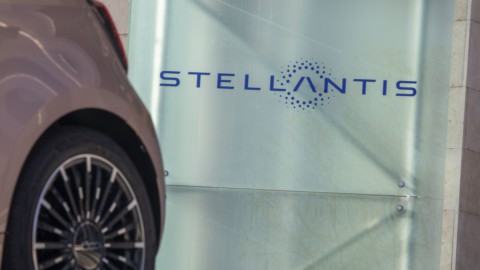La automobile production and vans in the Italian Stellantis plants are down for the fourth consecutive year. Last year, total assembled vehicles fell to 673 units, down 6,1% from 717 units in 2020, when plants were closed due to the first lockdown. But in 2021 it wasn't the pandemic that stopped productions but the crisis of semiconductors: in the first nine months of the year it was up by 14,2% but then, in the last quarter, production gaps weighed significantly. A situation that will affect 2022 as well.
The scenario was outlined by the Fim, the metalworkers' union of the Cisl, in its quarterly report on the car manufacturing in Italy. Compared to 2019, the situation is even more worrying with an overall drop of 17,7%, with passenger cars at -22,3%, and 9,6% of commercial vehicles, which are assembled in the plant in Sangro Valley of the Italian-French automotive giant.
As the Fim points out, production figures have been declining since 2017: "In the space of four years, 35% of overall production was lost", dropping from 1,03 million vehicles (including vans) to 673.475 unit. The decline is particularly evident for cars, whose production in these four years has fallen by 45%, from 743 to 408 thousand units. The microchip crisis hit the Stellantis group at a time when the fruits of the 5,5 billion euro investment plan for the three-year period 2019-2021 prepared by the former Fiat-Chrsyler were expected. And the postponement to 2022 of the launches initially planned for 2021 (the Alfa Romeo Tonale produced in Pomigliano and the Maserati Grecale in Cassino), have further aggravated the situation.
But what worries the union, in addition to the negative repercussions that are cascading throughout the sector, are the workers who are heavily affected in terms of wages.
In this worrying scenario, however, positive signals are coming from the Turin plant mirafiori which manages to even exceed pre-Covid levels. In 2021, 77 cars were produced from 36 in 2020 thanks to the launch of the 500 electric, by Sevel in Val di Sangro, where 265 vans were assembled (compared to 257 in 2021) and by Maserati in Modena, where the MC2021 super sports car went into production in the first six months of 20, bringing the historic factory Emilian to produce 860 cars, against the 160 of the previous year.
The situation of Cento plant is perhaps the most critical, the group has not yet clarified until when the current V6 engines can be sold in the US and what the reindustrialization project is. The reconversion of the factories towards the new engines also involves the Verrone factories, the Mirafiori mechanics and the Teksid foundries.
According to Uliano, even some announcements made by the CEO of the automotive group, Carlos Tavares, need to be more detailed. For example, the construction of the gigafactory in Termoli, where the electric batteries will be manufactured: “The government must inform us about the progress of the project. It is essential to understand the details of this important investment: from the employment impacts, to the management of the industrial transition, to social interventions both in terms of shock absorbers and those linked to the change of professional skills".
For the Fim, therefore, it is essential that the executive implement a policy of incentives for the purchase of models with the new engines, otherwise without incentives there is a risk of a further drop in sales. And time runs fast in front of the interruption of engines Diesel e petrol foreseen in Europe in 2035. For this reason, the Fim-Cisl believes that the trade unions and entrepreneurial associations develop together the requests to be presented to the Government to prevent "the industrial desertification of one of the most important industrial sectors of the economy of our country and the dramatic employment and social repercussions".





